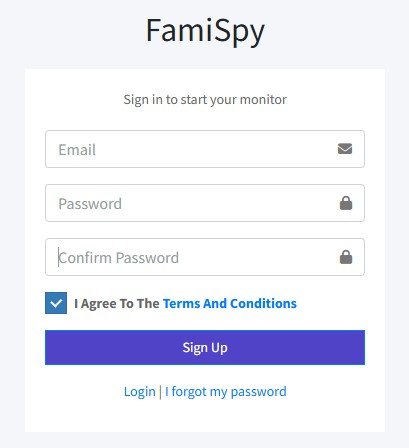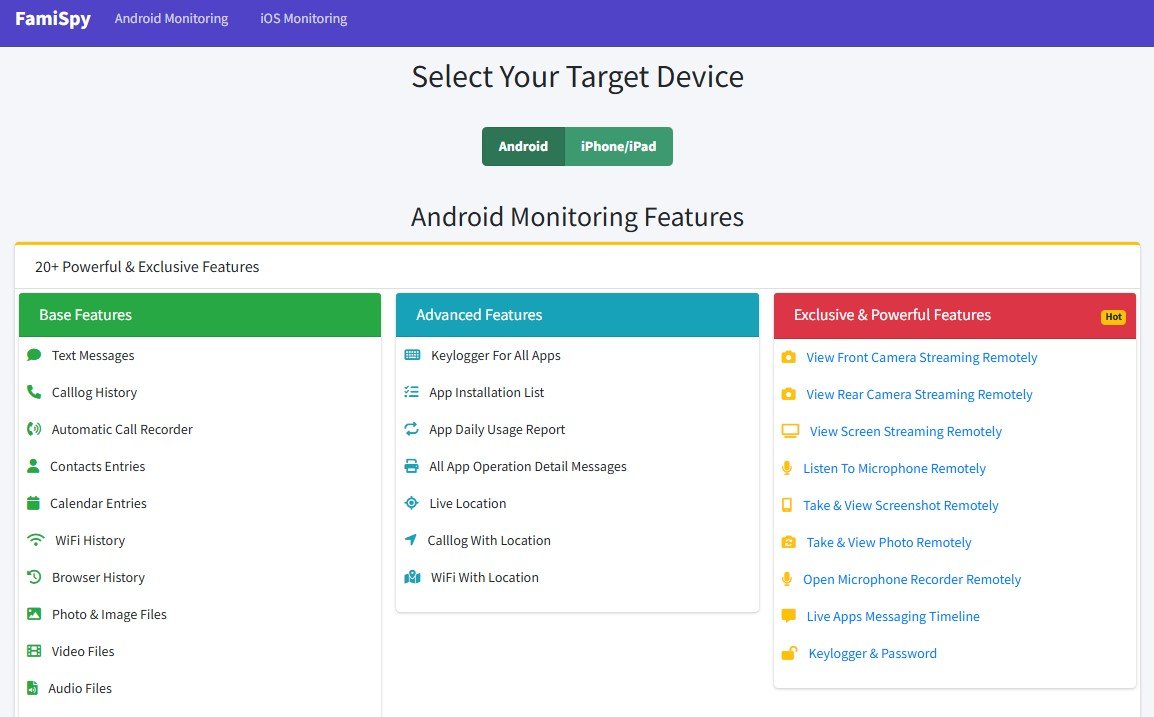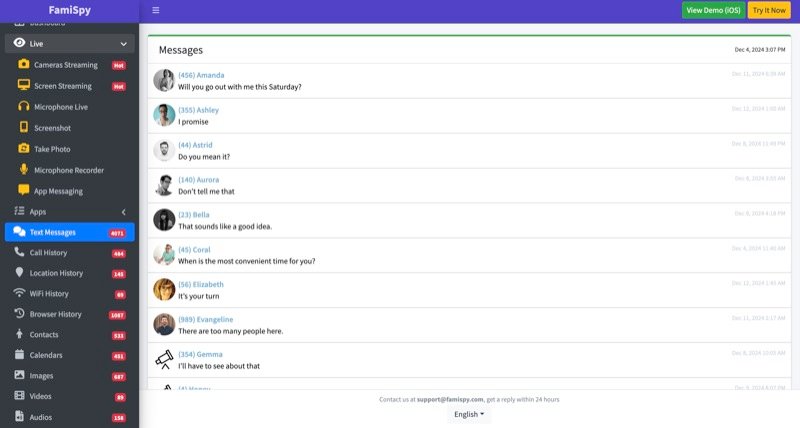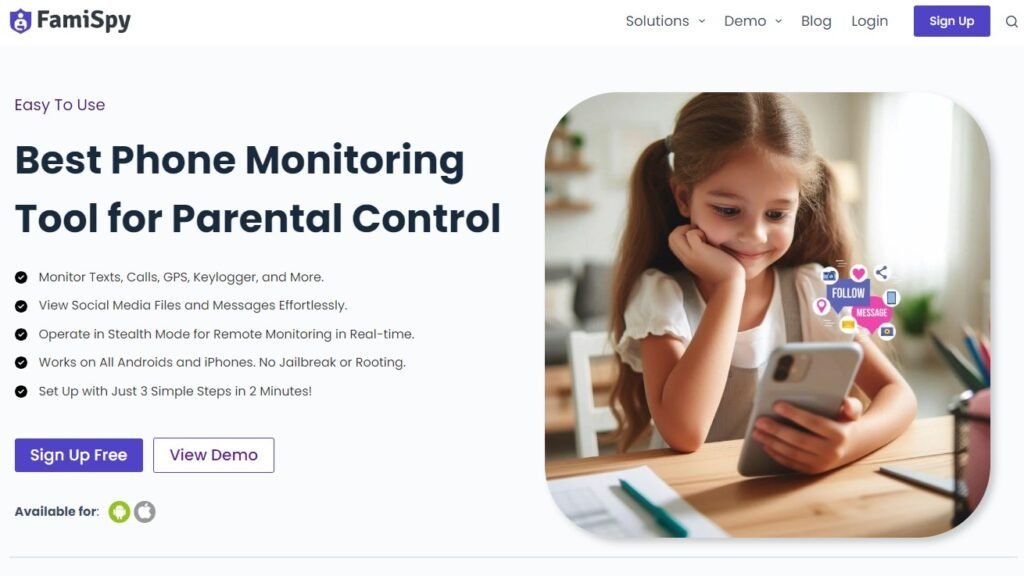If you have ever glanced at your child’s screen and seen the letters “AFK” pop up, you are not alone. It is one of the most common terms in digital communication. But for a concerned parent, seeing unfamiliar acronyms can raise questions.
To put it simply, AFK stands for “Away From Keyboard.”
While the definition is generally harmless, the context in which it is used can tell you a lot about your child’s online habits. Is it just a bathroom break, or is it a signal that they are switching to a private device? In this guide, we will decode the AFK meaning in texting, gaming, and apps like Roblox, and explore how tools like FamiSpy can help you ensure their digital safety.

Is “AFK” Hiding the Truth?
“Away From Keyboard” can be a cover for secret chats. FamiSpy reveals real-time activity and deleted messages instantly.
VIEW DEMOWhat Does AFK Mean?
Originating in the 90s chat rooms, AFK literally means the user is stepping away from their computer. Even though most kids now use smartphones (where there is no physical keyboard), the term stuck.
According to the Cambridge Dictionary, it is used to indicate that someone will not be at their device for a short time. It is polite internet etiquette to type “AFK” so friends don’t think they are being ignored.

AFK Meaning in Gaming
If your child plays video games, this is likely where they use AFK the most. In competitive games like League of Legends or Overwatch, going AFK is a significant event.
Why your child can’t “just pause” the game: In multiplayer games, if one person goes AFK, the whole team suffers. This is why your teen might panic if you call them for dinner during a match.
- Penalties: Games often ban players who go AFK too often.
- Peer Pressure: They don’t want to let their friends down.
What Does AFK Mean in Roblox?
Roblox is huge among younger children, and the term has a unique twist here. As a parent, distinguishing between the two meanings is helpful.
- Standard Use: Simply telling friends, “I’m getting a snack.”
- AFK Farming: Some Roblox games reward players for staying logged in for hours. You might see your child’s character standing still in an “AFK Arena” to earn points while your child is actually doing homework. For more on Roblox safety, you can check resources like Common Sense Media.
AFK Meaning in Texting
When asking “what does AFK mean in text,” the context shifts from competition to casual conversation. On WhatsApp, Snapchat, or Discord, typing AFK is a way to set a boundary.
It usually means:
- “I am driving.”
- “I need to focus on study.”
- “My parents are talking to me.”
In this sense, using AFK is actually a healthy habit. It shows they can disconnect from the screen.
The Hidden Risks: Why Context Matters
While AFK is usually innocent, understanding the context is key to digital safety. Sometimes, teenagers use acronyms to create a digital privacy bubble.
A child might type “AFK” in a family group chat or a public game lobby to appear inactive. However, they might actually still be on the device, switching to a private window to chat with strangers or access restricted content. If your child claims to be AFK but you still see the reflection of a screen in their glasses, or their location doesn’t match their story, it is reasonable to want to verify their safety.
How FamiSpy Helps You Monitor Digital Habits
Knowing the definition of slang is helpful, but having visibility into how your child uses their device is crucial for their well-being. FamiSpy is a comprehensive phone monitoring tool designed to give parents peace of mind. It operates discreetly in the background, allowing you to verify if “Away From Keyboard” is the truth or a distraction. By providing real-time insights into chats, location, and browsing history, FamiSpy helps you bridge the gap between trust and verification.
5 Key Features for Parental Control
- Social Media & Chat Monitoring: Don’t just guess what they are talking about; see it. FamiSpy lets you view incoming and outgoing messages on popular platforms like WhatsApp, Snapchat, Facebook Messenger, and Instagram, even if the messages are deleted later.
- Keylogger: This feature is essential for understanding slang. The Keylogger records every keystroke made on the device. You can see exactly what they type, including search terms, passwords, and acronyms like “AFK,” giving you full context of their conversations.
- Real-Time GPS Tracking: Verify their physical location when they claim to be away from their screen. FamiSpy provides accurate GPS tracking and location history, so you know if they are actually at the library studying or somewhere else entirely.
- Stealth Mode: The app is designed to be 100% invisible. It runs in the background without draining the battery or showing an icon, meaning you can monitor their activity naturally without altering their behavior or causing conflict.
- Browser History Monitoring: See what websites they visit, including those visited in “Incognito” or private modes. This helps you ensure they aren’t accessing adult content or dangerous forums when they are supposedly offline.
Step-by-Step Guide to Using FamiSpy
Getting started with FamiSpy is simple and doesn’t require advanced technical skills. Here is how to start protecting your child today:
Step 1: Create an Account
Visit the FamiSpy website and sign up for an account using your email address. Choose the subscription plan that best fits your family’s needs.

Step 2: Install the App
Follow the instructions sent to your email to install the FamiSpy application on the target device (your child’s phone). The process is quick and easy for both Android and iOS devices.

Step 3: Start Monitoring
Log in to your FamiSpy Control Panel from your own phone or computer. You will immediately see a dashboard displaying their latest activity, messages, and location.

A Note on Responsible Digital Parenting
Monitoring tools should be used responsibly. The goal of using apps like FamiSpy is protection, not punishment. We encourage parents to use these insights to start open conversations with their children about online safety, screen time boundaries, and the dangers of talking to strangers. Transparency often builds better trust.
Parent’s Cheat Sheet: AFK vs. Other Common Acronyms
Once you start using a monitoring tool, you might see many other acronyms in your child’s messages. Use this table to quickly decode what they are saying.
| Acronym | Full Meaning | Context & Usage |
|---|---|---|
| AFK | Away From Keyboard | User is stepping away for a moment but will return. |
| GTG | Got To Go | Used when ending a conversation or logging off. |
| TTYL | Talk To You Later | A standard, polite way to say goodbye in text messages. |
| SFS | Snap for Snap | Specific to Snapchat. Asking for a “shoutout” to gain followers. |
| WB | Welcome Back | Used when someone returns after being AFK. |
| LMK | Let Me Know | Asking for confirmation or an answer to a question. |
FAQs
Conclusion
The internet moves fast, and the language kids use moves even faster. Learning the AFK meaning is just one small part of understanding your child’s digital life. While it usually just means they are grabbing a snack, it helps to be aware of the context.
When “Away From Keyboard” becomes a way to hide secret chats or risky behavior, you need the right tools to keep them safe. FamiSpy provides the visibility you need into text messages, social media, and location, ensuring that you are never left in the dark about your child’s safety.
Ready to ensure your child is safe online? Visit FamiSpy.com today to learn more about our monitoring solutions.








